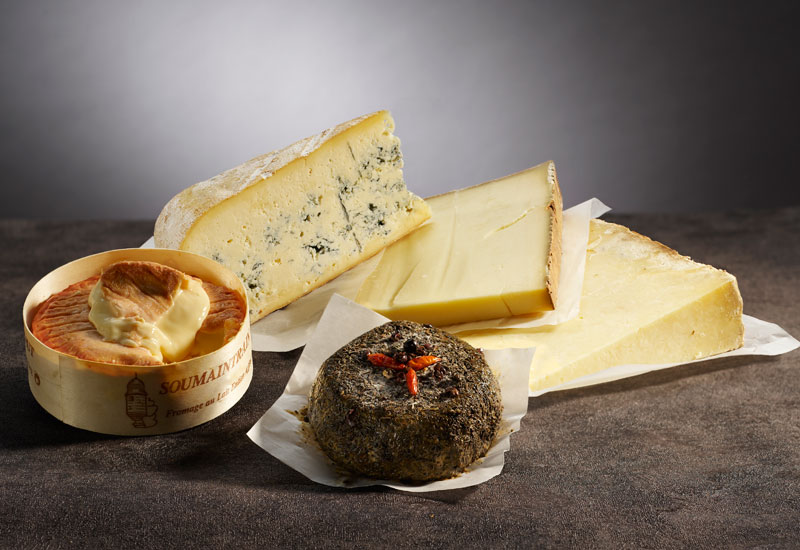Cheese can be used in many ways; hot or cold, cooked or uncooked. It adds aroma, salt and texture in many capacities. François Robin tells Caterer “good grazing, good animals, good farmer, good cheesemaker, good affineur (ager) and a good cheesemonger makes good cheese” and advises finding a cheesemonger “who knows the affineur who know the producers, who knows the farmer who knows his animals”.
Growing popularity
Promar business development manager Abir Khalil says: “Cheeses are extremely popular when talking about the white cheeses in the Middle East.
“However, around 35% of the consumption is mainly made up by French cheeses as the French producers are well known for their creativity, their innovative flavours and their ability to respond to different needs.”
Dany Abi Khalil, general manager of Lactalis Dairy products and Trading Middle East, agrees, stating: “Cheese is very important in the Middle East. Depending on the type, it can represent a main component of a meal like breakfast, a main ingredient like in a lasagna dish or even a snack in the afternoon with a cup of tea and some dates.”

| Advertisement |
Fromager François Robin says cheese is being widely eaten around the world in markets where traditionally it has not been as popular. He says: “Cheese is globalising and people here [in Dubai] are starting to have quite a lot of cheese, and in countries, such as India, it’s getting better. Also in Japan, Australia, New Zealand, and especially in the US. But France still has the best traditions in the world [with cheese] — maybe [on par] with Italy.”
So is there a healthy rivalry between the two European nations? “No — what is good for them is good for us,” the French cheesemonger adds. “If people eat cheeses they will eat French Italian, US cheeses, whatever. If it’s increasing [in popularity] worldwide, it’s good for French cheeses, so long as we keep it high-quality. The train is moving for cheese production so we have got to follow that.”
Supply chain
Regionally, it can be challenging to keep cheese in tip-top condition in the high temperatures and humidity typical of the arid Middle East. Coupled with this, sourcing cheese within the region is difficult as there is heavy reliance on importing products. How smoothly does this happen, in practical terms and what are the key challenges?
Promar’s Khalil says: “Some rules and criteria requested by Dubai Municipality could be considered an obstacle. European companies are not ready to do Arabic stickers, for example. Production and expiry dates are an obstacle too. Products sourced from cows’ stomachs need to be halal certified.”
Abi Khalil has a slightly different perspective, believing that the sourcing of the products is not as challenging in today’s world considering the advent of e-commerce and the option of shipping products via road, sea or plane, depending on the shelf life. However, he says: “The main drawback from a logistics perspective is the handling of the products. Many European cheeses transit through different parties (traders and wholesalers in Europe) before arriving to the consumer, and during this journey products suffer from bad handling or cold chain.”
While breaks in the cold chain will affect the product — negatively, on the whole — there is a certain amount of leeway with some kinds of cheeses at least, as Robin points out. “In France, we push the shelf life longer — fresher is not always better. For example, goat’s cheese can get blue dots and it’s perfectly safe to eat, even wanted in some cases. The shelf life doesn’t mean a lot to me by itself; each cheese is unique and there are no safety issues in [respect of] that for me.”






web.jpg)



 Search our database of more than 2,700 industry companies
Search our database of more than 2,700 industry companies









